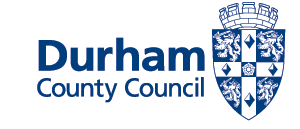Road resurfacing programme
Information about which roads we plan to treat, why we surface treat our roads and why we use different treatments.
Surface treating is where a surface treatment is laid on top of the existing road surface. It restores grip and texture and creates a waterproof surface to prevent water damage.
Surface Dressing video transcript (PDF, 99 KB)
Why we surface treat our roads
All roads wear out with use and need to be maintained and repaired.
If water gets under the surface it can cause damage to the road, either by washing away materials or by expansion when water freezes in cold weather, creating cracks, potholes damage. Asphalt, the main road material used, becomes brittle and cracks with age and sealing the surface is a simple way of extending the life of the road surface.
Resurfacing, rather than completely renewing the road surface, creates minimal disruption to users, has a smaller environmental impact and has less effect on any cables and other things that are under the road.
How we choose which treatment to use
The condition of the existing road surface and the volume of traffic that uses it decide which treatment is most appropriate.
Surface dressing
This is a treatment which restores and protects the road surface, sealing the road to prevent water from getting in which causes cracking or can lead to potholes. The treatment involves spraying emulsion binders to the road and then adding chippings to the surface. Find out more about Surface dressing.
Micro asphalt surfacing
Micro asphalt surfacing is laid on top of the existing surface by a special machine. This surfacing seals cracks and prevents potholes from forming, it also gives the road better skid residence. This is mainly suitable for estate roads or roads with lower traffic levels. Find out more about Micro asphalt surfacing .
Footway surface treatment
Footway Surface Treatment is used to seal, repair and extend the life span of footways. This treatment involves applying cold bitumen emulsion which has aggregate, water and additives added to make the mix. It seals the footway and prevents water from getting in to help extend the life span of a footway. Find out more about Footway surface treatment .
Rubber and plastic resurfacing
We have introduced recycled plastic waste into all our road resurfacing projects. Each 20 tonne truck load of surfacing material we use includes the equivalent of approximately 1,064 single use carrier bags and the crumb from 51 car tyres.
Together with our resurfacing partner, Rainton Construction, we are now introducing rubber crumb into the asphalt mix. The rubber tyre crumb which is being added to the surfacing mixture is a waste biproduct of the tyre recycling process and is sourced locally using tyres which have been collected from across County Durham.
The new road surface is expected to last longer than traditional materials and when the road surface needs replacing, the materials can be reprocessed and used again.
As well as having a positive environmental impact by removing material from going to a landfill site, the combined properties from the rubber and plastics also enhance the performance of the road. Combining the two waste products to the resurfacing mix will add the following properties:
- water-resistant surface, reducing the risks from the freeze-thaw actions which cause potholes
- improves the elastic properties making it less likely to crack
- more resistant to wear and tear
- less likely distort in hot weather
The road to net zero
We are using a new type of asphalt incorporating a carbon negative aggregate designed to lower the carbon footprint as part of its resurfacing works.
Find out about our trial at Elvet Hill in Durham. See our The road to net zero page.
Why we have speed limits after treating
A resurfaced road can be re-opened generally 30 minutes to two hours after treatment.
The dressing takes a while to fully 'bed-in' and during this time, traffic using the road can dislodge stones in the new surface if speeds are not controlled. To ensure the quality of our road surfaces it is really important that drivers slow down for a few days after the dressing takes place.
When it does not go to plan
The processes used to dress roads are sensitive to weather conditions and we sometimes just can not work as planned if the conditions are not right.
- Email help@durham.gov.uk
- Telephone 03000 26 0000

 Share this page on Facebook
Share this page on Facebook
 Share this page on Twitter
Share this page on Twitter
 Print this page
Print this page





